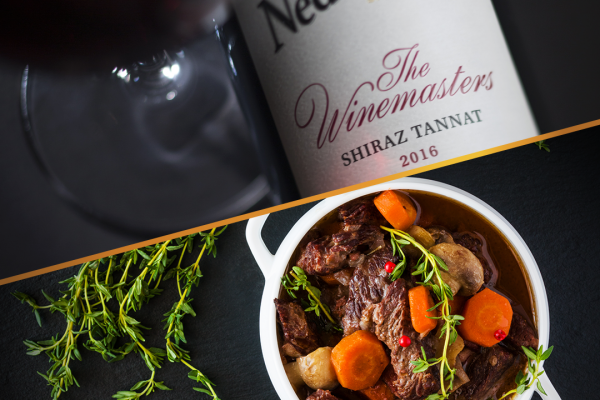Explore the flavours of the French city of Carcassonne in the Languedoc region, in support of Team Dimension Data for Qhubeka.
Now we journey to Cité de Carcassonne…
The restored medieval citadel or fortress known as the French city of Carcassonne in the Languedoc region calls for a formidable dish such as Daube Languadocienne. Daube, the hearty dish that marries wine and meat, is a slow-simmered winter wonder.
Daube is not just a dish; it’s also a method of cooking. It’s taken so seriously in Provence that a daube wouldn’t be a daube unless it were cooked in a daubiere, that quintessential Provencal cooking vessel. Made from the local red-gold clay, it’s almost spherical in shape, with a neck just large enough to insert your hand, a flat lid, and characteristic double handles to make lifting easy. (Fear not, though — any heavy casserole or Dutch oven does well.)
How to make Daube Languedocienne
Ingredients:
2¼ kilogram boneless beef chuck, excess fat trimmed, and cut into 2-cm cubes
1 bottle of Nederburg dry red wine (750 ml)
1 medium carrot, scraped, and cut in half
1 large onion, quartered
8 fresh thyme sprigs
1 long, fresh rosemary sprig, cut into 4 pieces
2 garlic cloves, halved
2 bay leaves
1 (one) 15×2-cm strip orange peel (orange part only)
5 strips smoked, streaky bacon, cubed
1 large onion, chopped
2 garlic cloves, chopped
1 tablespoon olive oil
Salt and freshly-ground black pepper to taste
5 tablespoons all-purpose flour
Chopped, fresh parsley
Instructions:
Combine the first nine ingredients in a large bowl. Cover and let it stand at room temperature for 2 hours. Remove the beef cubes from the marinade, pat dry, and put aside. Reserve the marinade.
Cook the bacon in a large, heavy-based pot over medium-low heat until the fat is rendered, about 5 minutes. Add the chopped onion and chopped garlic. Sauté until the onion is translucent, about 6 minutes. Using a slotted spoon, transfer to a large bowl.
Heat the oil in the same pot over high heat. Sprinkle the beef cubes with salt and pepper. Working in batches, add the beef cubes to the pot until they start to brown, about 5 minutes per batch. Transfer to the bowl with the bacon and onion mixture.
Reduce heat to medium-high. Add the flour to the pot. Whisk until the flour browns, about 4 minutes. Gradually whisk in the reserved marinade. Bring to a boil, scraping up the brown bits at the bottom of the pot. Add the beef and onion mixture and any accumulated juices to the pot. Cover tightly and simmer until the meat is just tender, about 2 hours, stirring occasionally. Uncover. Simmer until meat is very tender and the liquid is reduced to sauce consistency, about 45 minutes longer. (The daube can be prepared up to this point a day ahead. Let it cool to room temperature, refrigerate, and reheat, stirring frequently, when ready to serve.)
Remove from the heat. Remove the carrots, quartered onion, herb sprigs, bay leaves, and orange peel, and discard. Spoon the fat off the top of the daube. Taste to see if it needs any salt and pepper. Reheat gently before transferring to a warmed serving dish. Sprinkle with the chopped parsley and serve with cooked noodles of your choice.
The word daube comes from daubière, a covered casserole. Almost every region of France has its own daube. This one from the Languedoc-Roussillon region is a savoury, country-style daube, an informal main course that would be brilliantly paired with Nederburg The Winemasters Shiraz.




